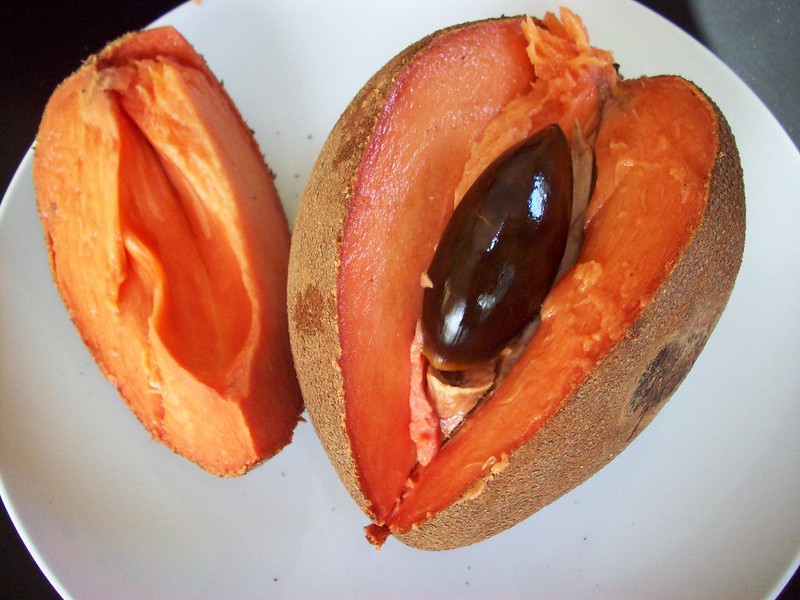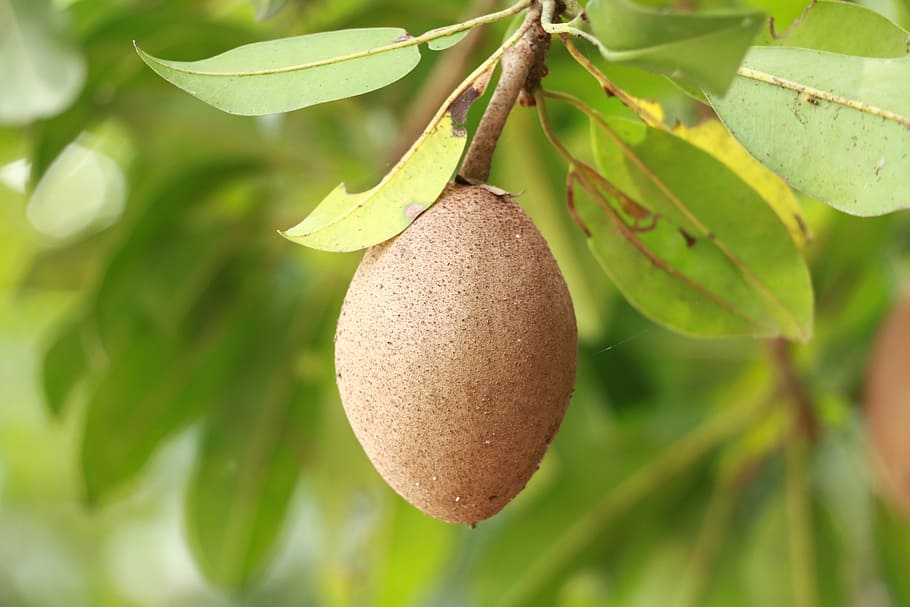
Exploring the flavors of Colombian cuisine often leads to the discovery of hidden gems like the Zapote. This unassuming fruit, with its delectable taste and cultural significance, adds a layer of richness to the country’s culinary tapestry.
Zapote, scientifically known as Pouteria sapota, is a fruit native to Central and South America. It is commonly found in various regions of Colombia, where the climate and fertile soils provide ideal conditions for its growth. The fruit is characterized by its round to oval shape and rough, brownish skin that resembles the texture of sandpaper. While the exterior may not be visually enticing, the true treasure lies within.
Flavor Profile and Varieties
When you cut open a Zapote, you’ll encounter the fruit’s rich, creamy flesh, which ranges in color from pale yellow to deep orange. The texture is smooth, velvety, and reminiscent of custard, earning the Zapote the nickname “custard apple” in some regions. Its flavor profile is equally enchanting, offering a harmonious blend of sweetness with subtle hints of pear, peach, and a touch of caramel. Some describe it as a cross between a mango and a sweet potato.
There are several varieties of Zapote found in Colombia, with each having its unique flavor nuances and appearances. The two most common varieties are the Zapote Negro (Black Zapote) and the Zapote Mamey. The Zapote Negro, as the name suggests, has dark brown to black skin and tends to be slightly sweeter. On the other hand, the Zapote Mamey has a reddish-brown skin and a creamy, orange flesh that exudes a delightful aroma.

Cultural Significance
In Colombian culture, the Zapote holds a special place, not only for its flavor but also for its versatility. It is often enjoyed fresh, scooped out with a spoon, and savored as a sweet, indulgent treat. The fruit is also used in various culinary preparations, including desserts, juices, smoothies, and ice creams.
One popular dessert featuring Zapote is the “helado de Zapote,” a delicious Zapote-flavored ice cream that provides a refreshing contrast to the country’s warm climate. In some regions, you’ll find Zapote featured in traditional Colombian sweets and pastries, highlighting its adaptability in culinary creations.
Health Benefits
Beyond its delightful taste, Zapote offers health benefits that make it an even more appealing fruit choice. It is a good source of dietary fiber, essential vitamins, and minerals, particularly vitamin C, vitamin A, and potassium. These nutrients contribute to overall well-being and support a healthy immune system.
Additionally, the fruit contains antioxidants that help combat free radicals in the body, promoting skin health and reducing the risk of chronic diseases.
Harvest and Availability
The Zapote fruit is typically in season from late spring to early summer in Colombia, with variations in timing depending on the region. During this period, you’ll find an abundance of Zapote in local markets and street vendors’ stalls across the country.
When selecting a Zapote, look for fruits that yield slightly to gentle pressure, indicating ripeness. It’s best enjoyed when fully ripe, as this is when its flavors are at their peak.
Whether enjoyed fresh or as part of a dessert, the Zapote offers a sweet and creamy escape into the heart of Colombian gastronomy, inviting both locals and visitors to savor its unique charms.
See all the latest news from Colombia and the world at ColombiaOne.com. Contact our newsroom to report an update or send your story, photos and videos. Follow Colombia One on Google News, Facebook, Instagram, and subscribe here to our newsletter.

